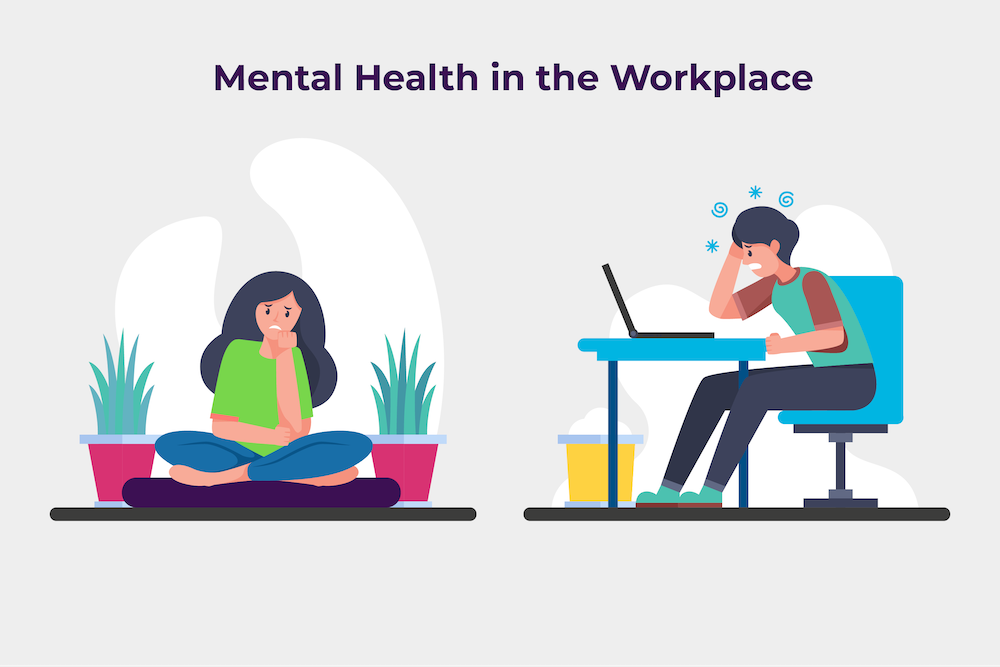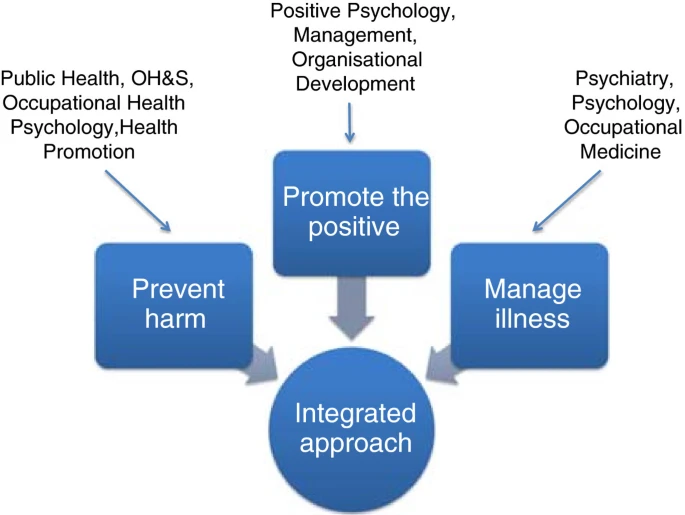The role of HRM in promoting employee wellness and mental health.

Introduction
The promotion of employee wellbeing and mental health at work is greatly helped by human resource management (HRM). The World Health Organization (WHO) claims that mental health issues are a major cause of disability and significantly increase the burden of disease worldwide. In this post, we'll look at how HRM affects workplace wellness and mental health promotion and how crucial it is to an organization's performance.
Positive Workplace Culture Development
Promoting employee wellbeing and mental health depends on a positive workplace culture. By encouraging good attitudes toward mental health, offering training on mental health concerns, and putting into place policies that put employee wellness first, HRM may significantly contribute to the development of a culture of wellbeing. According to Carnegie Mellon University professor Denise Rousseau, "HR has a role in creating a culture where mental health and wellbeing are recognized as important issues and are supported by policies, procedures, and practices that prioritize employee health" (Rousseau, 2021).
Providing Supportive Resources
Employees who are dealing with mental health issues can get support from HRM. For instance, they could give employees with Employee Assistance Programs (EAPs) that offer counseling and other mental health services. These initiatives can support staff members in managing stress, anxiety, and other mental health issues. Headversity CEO Ryan Todd states that "HR can provide the right resources and support to employees to help them manage their mental health, which in turn will create a more productive, engaged, and loyal workforce" (Todd, 2021).
Training and Education
Employee education on mental health concerns, including how to identify the warning signs and symptoms of mental health problems and how to get assistance, is another task that HRM can help with. Through education, the stigma around mental illness can be lessened, and a culture of acceptance and support can be fostered. Education is crucial, says Mindy Grossman, CEO of WW International. We must discuss mental health, and we must do it in a way that lessens stigma and fosters an accepting and helpful society (Grossman, 2021).
 |
| Figures 02: The three components of the comprehensive strategy for workplace mental health. |
Promoting Work-Life Balance
By putting in place policies that facilitate flexible work arrangements like telecommuting and flexible scheduling, HRM may also encourage work-life balance. These guidelines can assist staff members in juggling their personal and professional obligations, which can lessen stress and improve mental health. "A culture that promotes work-life balance is not only good for employees' mental health, but also for the bottom line," says Arianna Huffington, creator of Thrive Global. More engaged, effective, and devoted workers are those who feel supported in juggling their personal and professional obligations (Huffington, 2021).
Conclusion
In conclusion, HRM is crucial in fostering workplace wellness and mental health among employees. HRM may assist employees in managing mental health difficulties and develop a more engaged, effective, and devoted workforce by fostering a healthy workplace culture, offering helpful tools, offering training and education, and promoting work-life balance. According to the WHO, "Mental health is an integral part of health; indeed, there is no health without mental health" (WHO, 2021). To ensure the success of both their people and their businesses, firms must give employee wellness and mental health top priority.
References :
Grossman, M. (2021, February 26). 10 ways CEOs can prioritize employee mental health. Harvard Business Review. Retrieved from https://hbr.org/2021/02/10-ways-ceos-can-prioritize-employee-mental-health
Huffington, A. (2021, January 19). Prioritizing employee well-being is a smart business strategy. Entrepreneur. Retrieved from https://www.entrepreneur.com/article/362699
Rousseau, D. (2021). HR has a critical role to play in employee well-being. World Economic Forum. Retrieved from https://www.weforum.org/agenda/2021/02/hr-employee-well-being-pandemic/
Todd, R. (2021, March 23). The role of HR in promoting employee mental health. Forbes. Retrieved from https://www.forbes.com/sites/forbestechcouncil/2021/03/23/the-role-of-hr-in-promoting-employee-mental-health/?sh=406ebbb04b9c
World Health Organization. (2021). Mental health. Retrieved from https://www.who.int/news-room/fact-sheets/detail/mental-health
Header Image: https://info.totalwellnesshealth.com/hubfs/MentalHealth-01.png

While thanking for the above details sharing HRM should always encourage to have a work-life balance of employees by promoting flexible work planning times to reduce stress levels and improve to have peaceful mental health, advancing both employees and the result.
ReplyDeleteGood content ..!
ReplyDeleteFigure 1 was very good sellection. The image it self gives many points relating to the topic. i liked it as its usefull to me. Thank you
ReplyDeleteAnother essential aspect of promoting employee wellness is the ability to identify and address issues related to employee stress and burnout.
ReplyDelete